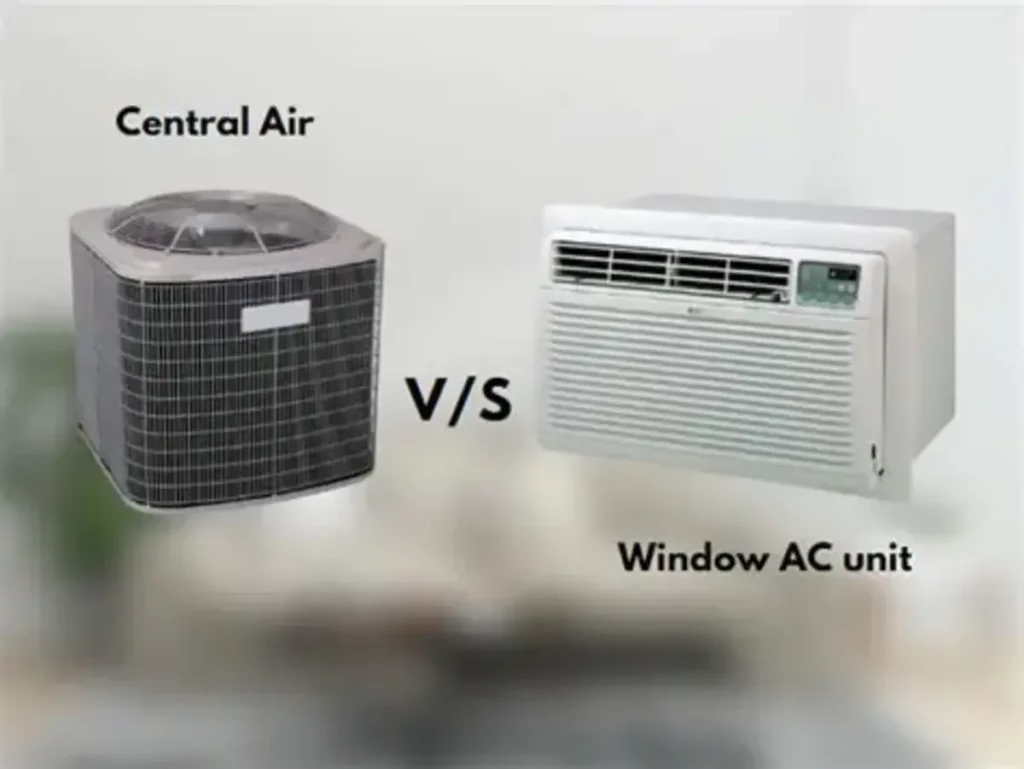Central AC vs Window Units: A Complete Comparison of Cost, Comfort, and Performance: When it comes to keeping indoor spaces cool and comfortable, homeowners and building managers often face a common question: Should I invest in a central air conditioning system or stick with window units?
Both options can deliver cooling relief, but they differ significantly in cost, comfort, performance, and long-term value. Understanding these differences helps you make a smart decision for your property and budget.
1. Cost: Upfront vs. Long-Term Investment
Initial Installation Costs
A window air conditioner is the more budget-friendly choice upfront. Prices typically range from $150 to $600 per unit, depending on the size and brand. Installation is straightforward — most people can set up a window unit without professional help.
By contrast, a central air conditioning system requires a larger initial investment. The cost for equipment, ductwork, and professional installation generally falls between $4,000 and $10,000 for an average home. For commercial or multi-story buildings, that figure can be higher due to system complexity.
Operating and Maintenance Costs
While central AC costs more to install, it’s usually more energy-efficient when cooling an entire building. Window units consume more power per square foot cooled, especially when multiple units run simultaneously.
Regular maintenance — such as filter changes, coil cleaning, and duct inspections — helps keep central systems efficient and can extend their lifespan to 15–20 years, compared to 8–12 years for most window units.
Verdict: Window units win for upfront affordability, but central AC systems offer better long-term efficiency and durability.
2. Comfort and Cooling Performance
Coverage and Consistency
A major advantage of central air is whole-home comfort. The system distributes cool air evenly through ducts, maintaining a consistent temperature throughout every room.
Window units, on the other hand, cool only the space they occupy. In multi-room homes or offices, you’ll need several units — each controlled separately — which can create hot and cold spots.
Noise and Air Quality
Central AC systems operate quietly since the main compressor is located outdoors. They also improve indoor air quality, as air passes through advanced filters that remove dust, pollen, and allergens.
Window units tend to be noisier and have basic filtration, which may not be ideal for allergy-sensitive environments or workspaces requiring low noise levels.
Verdict: Central AC delivers superior comfort, quieter performance, and cleaner air — key advantages for both homeowners and commercial properties.
3. Energy Efficiency and Environmental Impact
Energy Ratings
Both systems use the Seasonal Energy Efficiency Ratio (SEER) rating to measure performance. Newer central air systems often boast SEER ratings of 15 to 25, while most window units fall between 10 and 15.
Higher SEER ratings mean lower energy use and reduced utility bills over time.
Smart Controls and Zoning
Modern central AC systems can integrate with smart thermostats and zoned cooling, allowing you to control temperature by room or floor. This minimizes energy waste.
While some high-end window units now feature Wi-Fi connectivity, they still lack the precision and whole-building control that central systems provide.
Verdict: Central AC systems are generally more energy-efficient and environmentally friendly, especially when paired with smart technology.
4. Installation and Aesthetic Impact
Installation Requirements
Window units are plug-and-play — perfect for renters or small apartments. However, they can block natural light and restrict window use.
Central AC requires ductwork and professional installation. Once installed, it’s virtually invisible except for vents and thermostats.
Aesthetics and Property Value
A built-in central air system adds resale value and appeal to a home or commercial space. In contrast, window units are temporary fixtures and may detract from a building’s exterior appearance.
Verdict: Central AC provides a seamless, long-term solution that enhances both function and property value.
5. Which Is Right for You?
Choosing between central AC and window units depends on your space, budget, and long-term goals:
Choose Central AC if:
You want whole-building comfort, quiet performance, better air quality, and long-term value.
Choose Window Units if:
You’re cooling a small space, on a tight budget, or need a temporary or flexible option.
For most modern homes and commercial buildings, central air conditioning remains the gold standard for comfort and efficiency. However, for smaller living spaces or short-term needs, window units are a practical and affordable alternative.
Final Thoughts
Cooling technology has evolved, but the fundamentals remain the same: it’s about balancing cost, comfort, and performance.
harga ac 1/2 pk If you’re considering upgrading or installing a new system, consult a licensed HVAC professional to assess your building’s layout, insulation, and energy goals. The right system, properly installed, will deliver reliable comfort and performance for years to come.
